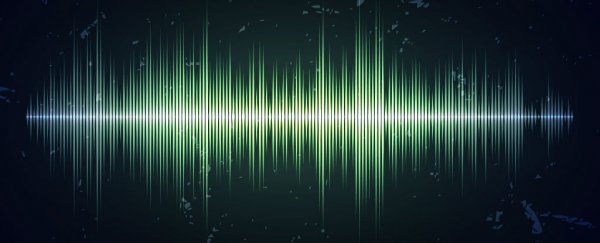Australian researchers have developed a new form of hybridised sound wave - the first in 50 years - and it opens up new possibilities for stem cell treatments. The waves are gentle enough to be used in biomedical applications and manipulate stem cells in non-disruptive ways.
The new hybrid sound waves are called "surface-reflected bulk waves", and combine two existing types: bulk waves (think a carpet being shaken from one end affecting the whole of the material) and surface waves (think waves rolling across the surface of the ocean without really affecting the depths underneath). By mixing these two types together, a powerful wave with high frequencies, but low amplitudes, is produced.
And that means drugs and vaccines can be delivered directly to the body through a nebuliser device. In the case of the tests that the scientists have already carried out, that means a fine mist inhaled into the lungs. "It's basically 'yelling' at the liquid so it vibrates, breaking it down into vapour," said one of the team, Amgad Rezk from RMIT University.
While surface acoustic waves have already been used to pump and mix liquids at very small scales, until now the process has been a very slow one: as the energy of the waves is increased, the device applying the waves becomes unstable. The addition of bulk waves stabilises the procedure again and means a higher level of power can be reached.
"We have used the new sound waves to slash the time required for inhaling vaccines through the nebuliser device, from 30 minutes to as little as 30 seconds," Rezk adds. "But our work also opens up the possibility of using stem cells more efficiently for treating lung disease, enabling us to nebulise stem cells straight into a specific site within the lung to repair damaged tissue. This is a real game changer for stem cell treatment in the lungs."
The combined power of the surface and bulk waves means that drugs can be administered at a rate of up to 5 ml per minute rather than around 0.2 ml per minute, which can make a "huge difference", according to Rezk.
A new device called HYDRA has been built to take advantage of these new surface reflected bulk waves. It converts electricity passing through a piezoelectric chip into vibrating sound waves - waves that are then used to break the liquid drugs into a spray.
HYDRA in turn improves the effectiveness of the advanced Respite nebuliser already in use at the Royal Melbourne Institute of Technology, a machine that's capable of doing everything from giving precise drug doses to asthma patients to providing needle-free vaccinations for infants. "The combination of surface and bulk wave means they work in harmony and produce a much more powerful wave," said Rezk.
The work has been published in the journal Advanced Materials.
